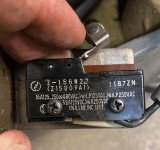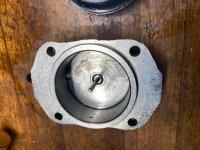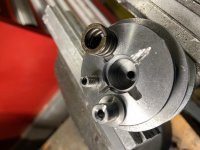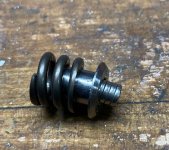Milland
Diamond
- Joined
- Jul 6, 2006
- Location
- Hillsboro, New Hampshire
Is the caliper designed with the seals on the pistons (groove in piston), or in the caliper (groove in caliper)?
Groove on piston will tend to drag due to the seal adding to the area of the piston, and deflecting under load such that it deforms to create a continual drag force.
When a groove in caliper seal is deformed, it tends to stretch down the piston under load, but this drag deformation usually helps draw the piston back into the caliper when the load (the hydraulic pressure) is released.
Regardless, this might be a situation (non-life critical) where you can try to find a O-ring the right size to replace the square ring seal in the calipers (whatever groove method is used). That should allow easier pushback of the piston, perhaps with a small added wobble (last resort).
Make sure the O-ring is EPDM rubber, which is compatible with brake fluid.
Groove on piston will tend to drag due to the seal adding to the area of the piston, and deflecting under load such that it deforms to create a continual drag force.
When a groove in caliper seal is deformed, it tends to stretch down the piston under load, but this drag deformation usually helps draw the piston back into the caliper when the load (the hydraulic pressure) is released.
Regardless, this might be a situation (non-life critical) where you can try to find a O-ring the right size to replace the square ring seal in the calipers (whatever groove method is used). That should allow easier pushback of the piston, perhaps with a small added wobble (last resort).
Make sure the O-ring is EPDM rubber, which is compatible with brake fluid.



 But you still gotta do it. Or crash, that's the other choice.
But you still gotta do it. Or crash, that's the other choice.







